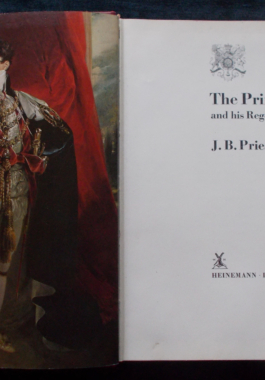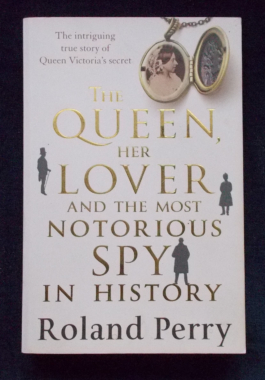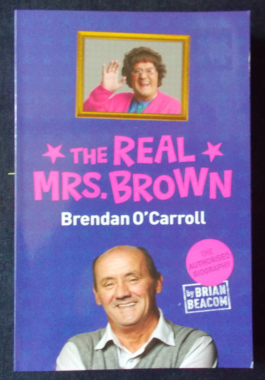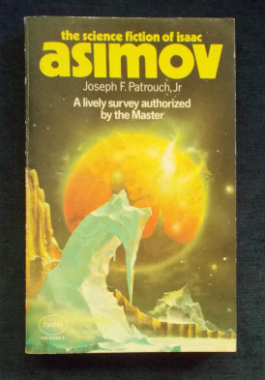A fabulous, easy to read volume on the Prince Regent and his day. The Regency Period was one of the most romantic of British history: an age that swung between extremes of elegance and refinement and the depths of sodden brutality. The central figure is the Prince Regent, 'Prinny', and though he sometimes appears as a gigantic spoilt child, he was famously good company and a notable patron of the arts. The author portrays the personalities of the giants of the romantic age - Byron, Shelley, Sheridan, Wordsworth, Jane Austen, Beau Brummel and Sir Walter Scott; Davy Faraday and Macadam; Turner, Constable and Cotman - to name a few. It was an age of extravagance; an age marked by great eccentricities and prodigious jokes; the Luddite riots; the Battles of Waterloo and Peterloo; the first waltzes and the first locomotives. There's exotic and outrè fashions, scandals, political upheaval, architecture and the lot of the common man. Illustrated with colour and black and white drawings and photographs.
-


-
 Long before her successful marriage to Prince Albert, Princess Victoria had a passionate affair with a dashing Scotsman. The 13th Lord Elphinstone was a trusted member of her uncle King William IV's household and a nobleman - but despite his impressive pedigree, Elhinstone was neither German nor royal, prerequisites for the 15 year old princess's ambitious mother, the Duchess of Kent. As the revelations of Victoria's out of wedlock affair (and the rumoured child that the union produced) would have threatened her reign, attempts were made to bury the matter forever. Elphinstone was appointed Governor of Madras and effectively banished to India. The young princess never forgot her first love; she pined for five years before giving in to her mother and marrying Prince Albert of Saxe-Coburg. Successive generations of Royals kept Victoria's secret, aware that the Queen;s correspondence with her cherished first-born 'Vicky' (the Princess Royal) revealed all and lay like a ticking time bomb in a German castle attic In 1945, Victoria's great-grandson King George IV sent Royal favourite (and MI5 operative) Anthony Blunt on seven special missions to recover the letters. But Blunt was one of history's successful double agents; before returning the letters to Buckingham Palace he microfilmed the most controversial missives and passed them on to the KGB. Perry learnt of Blunt's actions while interviewing two ex-KGB master spies in Moscow in the 1990s.His mission to uncover the story of Victoria's first love saw him spending months combing through more than 300 heavily edited files in the British Library, piecing together the truth of Victoria's secret for the first time. Here is a surprising true story of passion, long-buried secrets and international espionage. With balck and white and colour photographs.
Long before her successful marriage to Prince Albert, Princess Victoria had a passionate affair with a dashing Scotsman. The 13th Lord Elphinstone was a trusted member of her uncle King William IV's household and a nobleman - but despite his impressive pedigree, Elhinstone was neither German nor royal, prerequisites for the 15 year old princess's ambitious mother, the Duchess of Kent. As the revelations of Victoria's out of wedlock affair (and the rumoured child that the union produced) would have threatened her reign, attempts were made to bury the matter forever. Elphinstone was appointed Governor of Madras and effectively banished to India. The young princess never forgot her first love; she pined for five years before giving in to her mother and marrying Prince Albert of Saxe-Coburg. Successive generations of Royals kept Victoria's secret, aware that the Queen;s correspondence with her cherished first-born 'Vicky' (the Princess Royal) revealed all and lay like a ticking time bomb in a German castle attic In 1945, Victoria's great-grandson King George IV sent Royal favourite (and MI5 operative) Anthony Blunt on seven special missions to recover the letters. But Blunt was one of history's successful double agents; before returning the letters to Buckingham Palace he microfilmed the most controversial missives and passed them on to the KGB. Perry learnt of Blunt's actions while interviewing two ex-KGB master spies in Moscow in the 1990s.His mission to uncover the story of Victoria's first love saw him spending months combing through more than 300 heavily edited files in the British Library, piecing together the truth of Victoria's secret for the first time. Here is a surprising true story of passion, long-buried secrets and international espionage. With balck and white and colour photographs. -
 Who'd have thought a Dublin mammy with a cream cardigan and elasticated tan tights could storm British TV screens and leave a nation helpless with laughter? Brendan O'Carroll saw his TV show Mrs. Brown's Boys become a number 1 ratings success. But he had to battle hard for success. The youngest of eleven children, his mother was Maureen O'Carroll, a former nun who went on to become the first woman to be elected to the Irish parliament. Brendan adored his strong, widowed mother - and she later became the inspiration for his indomitable character Agnes Brown. The family endured poverty reminiscent of Angela's Ashes and Brendan saw no option but to leave school at 12 to work. He married young and for decades struggled to make ends meet. Eventually, bankrupt and desperate, Brendan went to see a fortune teller who told him she could see his future achieving worldwide success as a comedian and actor. At first Brendan laughed at the notion, but then he thought of how much his friends loved his gags, and decided to give it a go...A magical story of how a lovable Irishman with a wig and with a wit as caustic as battery acid surprised everyone - most of all himself - by becoming one of the best-loved comedians in the world. It is also a story of hardship, heartbreak and talent - a reminder that sometimes facts can be even more extraordinary than fiction.
Who'd have thought a Dublin mammy with a cream cardigan and elasticated tan tights could storm British TV screens and leave a nation helpless with laughter? Brendan O'Carroll saw his TV show Mrs. Brown's Boys become a number 1 ratings success. But he had to battle hard for success. The youngest of eleven children, his mother was Maureen O'Carroll, a former nun who went on to become the first woman to be elected to the Irish parliament. Brendan adored his strong, widowed mother - and she later became the inspiration for his indomitable character Agnes Brown. The family endured poverty reminiscent of Angela's Ashes and Brendan saw no option but to leave school at 12 to work. He married young and for decades struggled to make ends meet. Eventually, bankrupt and desperate, Brendan went to see a fortune teller who told him she could see his future achieving worldwide success as a comedian and actor. At first Brendan laughed at the notion, but then he thought of how much his friends loved his gags, and decided to give it a go...A magical story of how a lovable Irishman with a wig and with a wit as caustic as battery acid surprised everyone - most of all himself - by becoming one of the best-loved comedians in the world. It is also a story of hardship, heartbreak and talent - a reminder that sometimes facts can be even more extraordinary than fiction. -

The Right Stuff: Tom Wolfe
$70.00Wolfe began The Right Stuff at a time when it was unfashionable to contemplate American heroism. Nixon had left the White House in disgrace, the nation was reeling from the catastrophe of Vietnam, and in 1979 - the year the book appeared - Americans were being held hostage by Iranian militants. Yet it was exactly the anachronistic courage of his subjects that captivated Wolfe. In late 1940s Americans attempted to break the sound barrier Test pilots were people who live fast lives with dangerous machines - not all of them airborne. Chuck Yeager was certainly among the fastest and was determined to push through Mach 1 - a feat that some had predicted would cause the destruction of any aircraft. Yet soon the focus shifts to the seven initial astronauts, tracing Alan Shepard's suborbital flight and Gus Grissom possibly flooding his Liberty capsule by blowing the escape hatch too soon. There is also an admiring portrait of John Glenn's apple-pie heroism and selfless dedication. Tom Wolfe: "The Right Stuff" became a story of why men were willing - willing? - delighted! - to take on such odds in this, an era literary people had long since characterised as the age of the anti-hero." -
 The author travelled completely around the continent - a distance of 13,000 miles. He visited cities, towns and villages; sheep and cattle stations; the Woomera rocket range and indigenous settlements. The reader will meet a wide range of personalities and read informal discussions on a great many topics: immigration, population problems and potentials, Australian farming and much more, all leading to speculation on the future of this country and what role in will play on the world stage in the future.
The author travelled completely around the continent - a distance of 13,000 miles. He visited cities, towns and villages; sheep and cattle stations; the Woomera rocket range and indigenous settlements. The reader will meet a wide range of personalities and read informal discussions on a great many topics: immigration, population problems and potentials, Australian farming and much more, all leading to speculation on the future of this country and what role in will play on the world stage in the future. -
 An authoritative survey and analysis of Asimov's science fiction, offering a unique insight into the themes, stories, characters and settings that have enthralled millions of fans for over thirty years. Every aspect of Asimov's works is investigated, from the very early shorts, through the Robot series, the Foundation series and the Lucky Starr novels, right up to and including the Gods Themselves.
An authoritative survey and analysis of Asimov's science fiction, offering a unique insight into the themes, stories, characters and settings that have enthralled millions of fans for over thirty years. Every aspect of Asimov's works is investigated, from the very early shorts, through the Robot series, the Foundation series and the Lucky Starr novels, right up to and including the Gods Themselves. -
 Book Two contains the text of seventeen interviews heard ion the award winning programme The Search For Meaning. They reflect the diversity of society and include: Poet Kevin Gilbert; management consultant Margot Cairns; former father of the Federal Parliament, Hon. Tom Uren; natural therapist Dorothy Hall; and others whose stories are equally of interest, for all participants reflect on the meaning which shapes their lives. They speak from the authenticity of their own experience.
Book Two contains the text of seventeen interviews heard ion the award winning programme The Search For Meaning. They reflect the diversity of society and include: Poet Kevin Gilbert; management consultant Margot Cairns; former father of the Federal Parliament, Hon. Tom Uren; natural therapist Dorothy Hall; and others whose stories are equally of interest, for all participants reflect on the meaning which shapes their lives. They speak from the authenticity of their own experience. -

Yes, everything you thought you knew is STILL wrong! As made famous on QI - Quite Interesting with Stephen Fry. You'll be amazed at which country has the lowest age of consent; and that you should definitely NOT urinate on a jellyfish sting to ease the pain; and you will also discover when a spiral staircase is not a spiral staircase. Great potential for trivia buffs.
-
 A second volume of letters to that august, imposing publication, The Times from the early 1900s up until the 1980s - not only from the man in the street, but from luminaries such as Evelyn Waugh (earning an honest dollar); Sir Thomas Beecham (on tempo, naturally); Agatha Christie (on Shakespeare); Joyce Grenfell ('glamouramas') Robert Graves, author of I, CLaudius (on the bliss of being ignored) and so many more. Other topics that have stirred a letter to The Times: trouser turn-ups; the origin of marmalade; the whereabouts of Ruritania; hygiene and the Communion cup; top hats; how to get a message to an express train (pre-mobile phone days...); Oliver Cromwell's head; the sinking of the Titanic and perfect manners. Great for the social historian - or just for fun.
A second volume of letters to that august, imposing publication, The Times from the early 1900s up until the 1980s - not only from the man in the street, but from luminaries such as Evelyn Waugh (earning an honest dollar); Sir Thomas Beecham (on tempo, naturally); Agatha Christie (on Shakespeare); Joyce Grenfell ('glamouramas') Robert Graves, author of I, CLaudius (on the bliss of being ignored) and so many more. Other topics that have stirred a letter to The Times: trouser turn-ups; the origin of marmalade; the whereabouts of Ruritania; hygiene and the Communion cup; top hats; how to get a message to an express train (pre-mobile phone days...); Oliver Cromwell's head; the sinking of the Titanic and perfect manners. Great for the social historian - or just for fun.


